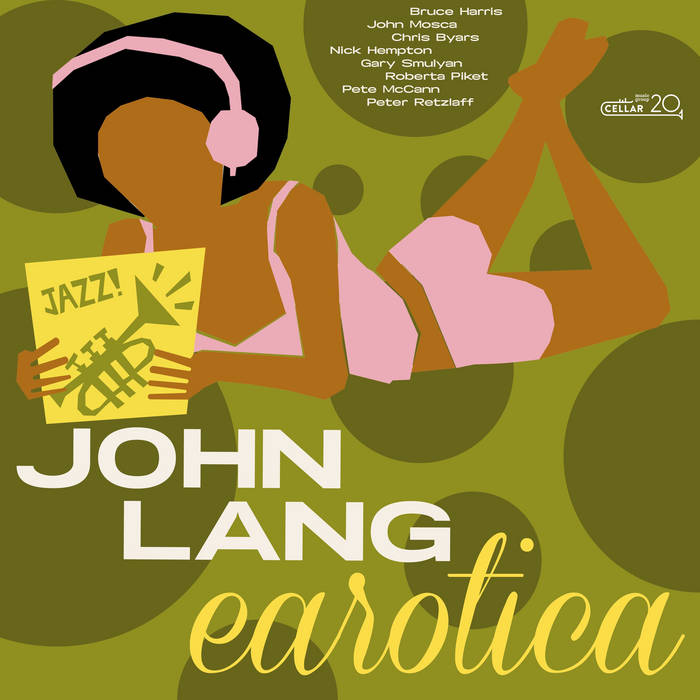
Earotica
by John Lang
When John Lang arrived in New York from California, in 2000, he had an upright bass and an electric bass and no definite place to keep them. “I didn’t know anybody, so I just got the first apartment I could,” he says. By luck, his new place was a few floors down from David “Happy” Williams—the great bassist who, along with Billy Higgins and Cedar Walton, made up one of the elegant and propulsive rhythm sections ever to play jazz. Williams put his new neighbor on the guest list for shows, and what Lang heard transformed him. “When you went into the Village Vanguard and the band was on, the whole room felt like it was floating,” he says. “That’s still what we’re all shooting for.“
During the pandemic, the Vanguard shut down, and so did just about every place else. In New York, live music was effectively dead. But Lang, like other musicians, drew inspiration from Duke Ellington’s motto of resilience: “I merely took the energy it takes to pout and wrote some blues.” Lang began digging through lead sheets—unfinished ideas from a busier time. He made a date with a studio, and he thought about an ideal band: an octet, as powerful and varied as a big band but lighter on its feet. “There were a lot of cats around town who didn’t have enough work,” he says. “So I called up my dream team—and they all said yes.” It was only after the roster was full that he realized the recording date was just twelve weeks away.
For the next three months, he’d have to arrange a tune every week.
He conceived of the album as an evening of music in one of New York’s clubs—the ideal set that, with everything shut down, we couldn’t hear. After decades as a working musician, Lang was fluent in the city’s musical idioms: he knew how to write an easygoing swinger, or a funk jam, or a Latin cascara. Best of all, he was deeply familiar with his players’ strengths and idiosyncrasies. “When I sat down to write, I knew who I was writing for,” he says.
The result is the best kind of social music, constructed to engage both the musicians in the band and the listeners in the crowd. Blues for Faddis, a tribute to the great trumpeter Jon Faddis, features one of his star protegees, Bruce Harris. “Bruce is a great blues soloist, with encyclopedic knowledge,” Lang says. Roberta Piket, the pianist, contributed an interlude that became the intro to In My Fallitude. Piket and the guitarist Pete McCann are longtime collaborators, so Lang gave them a moment of musical solidarity: “In Poetry and Commotion, it’s them against the band for a while, and I knew they’d like that.” The music here traverses many moods: gritty, pensive, lyrical, down-home. The common thread is an emphasis on the feel of dancing. “My mother ran a dance company, and I grew up in the disco era,” Lang says. “I’ve always thought that music should be danceable.”
Liner Notes By Nick Trautwein
credits
released September 15, 2023
John Lang – bass
Bruce Harris – trumpet
John Mosca – trombone
Chris Byars – alto sax
Nick Hempton – tenor sax
Gary Smulyan – baritone sax
Roberta Piket – piano
Pete McCann – guitar
Peter Ratzlaff – drums
Executive Producers: Cory Weeds and Joel Arnow
Recorded at Carriage House Studios, Stamford, CT. June 6th and 7th, 2022
Head Recording Engineer: Johnny Montagnese
Recording Engineer: McLee Mathius
Assistant Recording Engineer: Joel Arnow
Mixed at “J Sound” by Joel Arnow
Mastered by Dan Millice
Recording Session Produced by Joel Arnow Copyist: Chris Byars
Cover Art: Charles Ruggiero
Production Assistant: Mel Lopez
EAROTICA